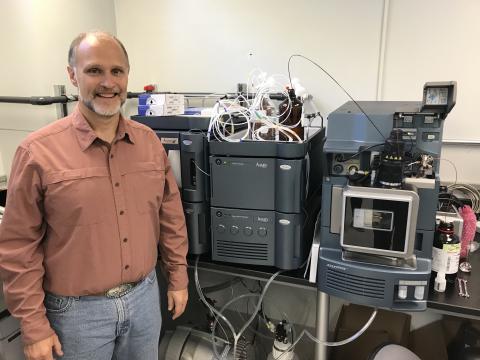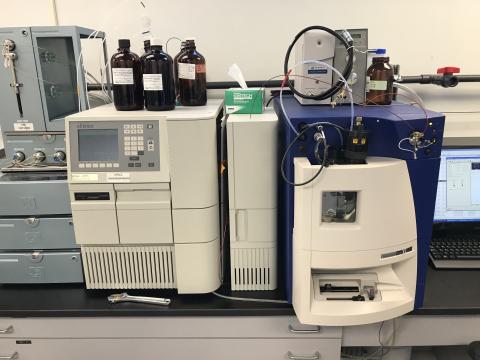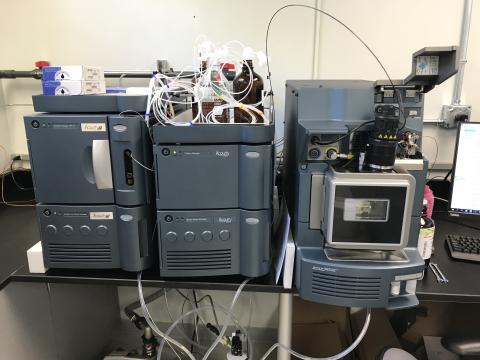By: Gabrielle Boucher
The Water Sciences Laboratory (WSL) on East Campus recently obtained funding for a new addition to its wide array of advanced analytical equipment. This new instrument, a Xevo TQS triple quadrupole mass spectrometer, is a major upgrade for the lab which has been using an older “triple quad” since 2002. This new machine will have state of the art detection of chemicals, speed up processes and give researchers who use the lab an edge on research proposals and publications, one of the ways it demonstrates competence and efficiency.
The Xevo TQS allows the lab capability to measure “emerging contaminants” at levels that previously could not be measured. Emerging contaminants, including new pesticides, pharmaceuticals, illicit drugs, veterinary and human antibiotics, steroids and flame retardants, can now be measured for research projects at higher precision and greater speed than ever before. Examples of emerging contaminants that can be measured with the Xevo TQS include polyfluoroalkyl substances, or “PFAS”, which are highly complex and persistent. Methods for measuring these chemicals have only recently become available and are these contaminants are being found in water supplies, soil, and plant and animal tissue. Being able to measure the PFAS can help to better understand their effects on human and ecosystem health. Director Daniel Snow notes the instrument is 1,000 times more sensitive than the older Quattro micro. The Xevo TQS also allows for less sample preparation and can rapidly switch between different detection modes, all of which speeds up the entire process. Pair that with the instrument being 10 times faster in analyzing a sample, the lab expects to make huge strides in emerging contaminants research.
Funding for the Xevo TQS was provided from a combination of sources, including a large portion from the Nebraska Research Initiative. The new equipment will be operated and maintained by Sathaporn (Tong) Onanong, who has developed a variety of methods for emerging contaminants since joining the WSL staff in 2008. The Xevo TQS requires extensive knowledge to operate properly, though, there are plenty of opportunities for students and researchers to be trained. The Lab Research Manager, Tania Biswas, has developed a suite of training modules for new users that includes basic safety training, lab methods training, and actual instrument proficiency training. Snow says the lab is always open to the possibility of training students and generally starts with sample extraction and purification. One use for the older Quattro mass spectrometer is to train others on how to properly use a triple quadrupole mass spectrometer. After mastering preparation and operation of the Quattro, students will be able to move on to use the new triple quadrupole.
Part of the Nebraska Water Center, the Water Sciences Laboratory will celebrate its 30th anniversary in 2020. The new equipment is an important part to upgrading the look and feel of the lab whose mission is to provide technology, expertise, services, and training in advanced analytical science supporting today’s water and natural resources students, researchers, and stakeholders. Staff and student users are looking forward to sharing more of what they do with the community and promoting the laboratory through tours, and expects to hold an open house promoting the new capability in 2020.



